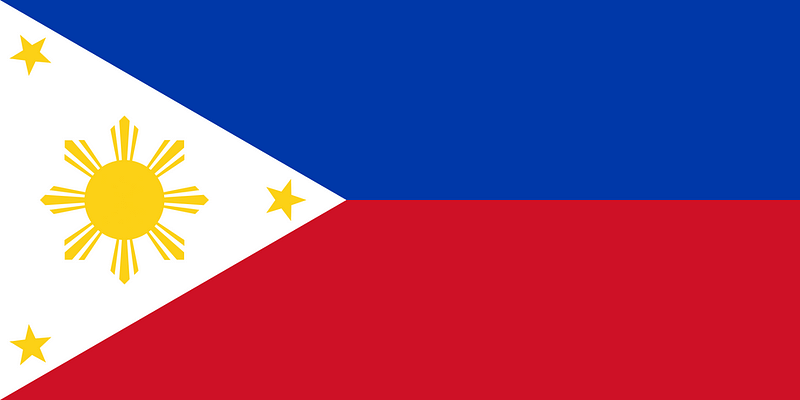This travel wiki page of the Philippines will help travelers with quick and relevant information to consider when planning and visiting the country. It is difficult to find all the relevant information you need on culture, safety, travel restrictions, and things to do, so we summarize it all here. If anything is stale or outdated, please let us know! Let us dive in and explore more high-level information as a Philippines trip planner.
Last updated October 15th of 2022.
Table of contents
National Information & Culture
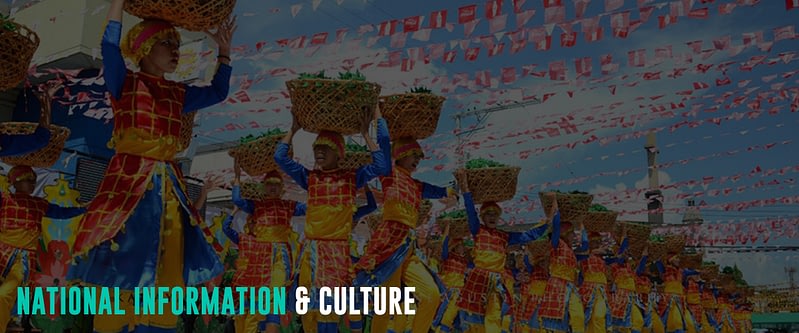
Officially, the Republic of the Philippines is an island country in Southeast Asia. Situated in the western Pacific Ocean, the South China Sea bounds the country to the west, the Philippine Sea to the east, and the Celebes Sea to the southwest. There are around 7,641 islands categorized into three main geographical divisions from north to south: Luzon, Visayas, and Mindanao. Manila is its capital city, and the official currency is the Philippine Peso (PHP).
Being close to the equator, the Philippines is a tropical country with various natural resources and globally significant biodiversity. However, the country’s Pacific Ring of Fire location makes it prone to earthquakes and typhoons.
The Spanish, American, and Japanese colonial rules primarily influenced Filipino culture, interspersed with trade with the Chinese, Arabs, and Malay. More than 80% of the population is Catholic which shows that Filipinos are religious. And up to the present, the “Bayanihan,” or spirit of kinship and camaraderie, is still one notable Filipino trait. In addition, Filipinos have high respect for elders, family oriented and have close family ties, and are hospitable, very friendly, and warm. For example, children in some places wave to buses full of tourists as a sign of welcome.
Tradition
Another tradition unique to the Philippines is having the most extended Christmas celebrations. As early as September, the Christmas spirit is already in the air. You will hear Christmas songs, and Filipino households will start decorating their homes with bright lights and lanterns.
Aside from its culture, the Philippines boasts some of the best beaches in the world and scenic locales. Thus, the Philippines is a popular destination for retirement for foreigners because of its climate and low cost of living.
When planning your trip, the Philippines’s Department of Tourism web page has helpful information for you to consider.
Special Travel Considerations

Covid-19 Policy
Fully-vaccinated foreign nationals can now visit the Philippines, and individuals who have received at least one booster shot are exempted from presenting a pre-departure PCR test. Children below 12 can also travel to the Philippines regardless of vaccination status. However, they must follow the protocol for the accompanying fully-vaccinated foreign parent.
Arriving passengers should register at One Health Pass Phillipines three (3) days before departure to get a QR Code. In addition, visitors must submit proof of vaccination and booster shot at the said portal, along with confirmed hotel bookings and return flight details. Wear face masks and social distancing when in a public space is advisable.
But all of these Covid-19 policies may vary over time. Hence, checking the latest travel guidelines when planning your trip is best. You can also check the Department of Health web page.
Travel Insurance
Mandatory travel insurance for foreign nationals as an entry requirement is no longer a requirement but is highly encouraged. As much as possible, the travel insurance covers Covid-19 and emergency repatriation.
Visa Information
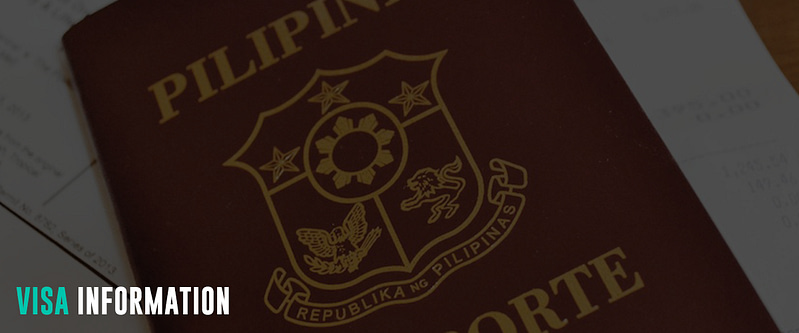
Nationals from 157 countries can enter the Philippines for business and tourism purposes without visas for a stay not exceeding thirty (30) days. Similarly, Brazilian and Israeli citizens are given fifty-nine (59) days’ stay, while Hong Kong SAR and Macau SAR passport holders can stay for a maximum of fourteen (14) days. However, visitors who wish to stay longer must extend their visa for a possible fee. To do so, visit the nearest immigration office in your area.
Visitors from those countries can have such privileges as long as they hold return tickets for their journey to the port of origin or the next port of destination. Also, their passports should be valid for at least six (6) months beyond the contemplated period of stay.
Meanwhile, tourists from countries not included in the list must visit the nearest Philippine Embassy or Consulate to apply for their appropriate visa.
Popular Attractions
The Philippines welcomes everybody to be part of the fun, from exploring the coastlines, diving into the deepest sea, trying out the gastronomic experience, and immersing in the unique Filipino culture. The country boasts world-class white sand beaches, diverse coral reefs best for diving and snorkeling, and rich history from Luzon, Visayas, and Mindanao.
Palawan
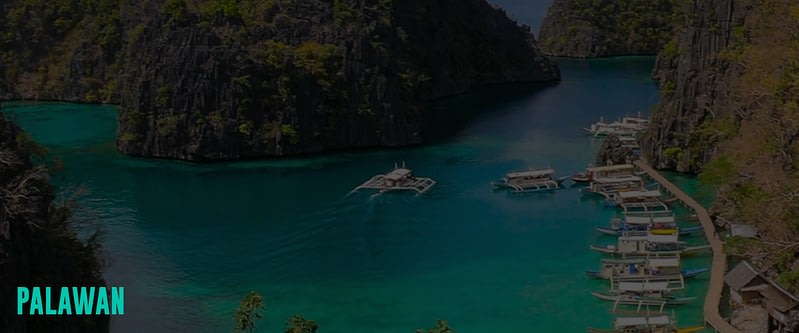
Palawan is an archipelagic province in the Philippines and the country’s Last Frontier and the Philippines’ Best Island. The Palawan islands boast white sand beaches, clear blue waters, a spectacular variety of marine life and shipwreck sites, and majestic towering limestone cliffs. Visitors who love swimming, snorkeling, diving, and island hopping should not miss Palawan on their travel bucket list.
Puerto Princesa Subterranean River National Park
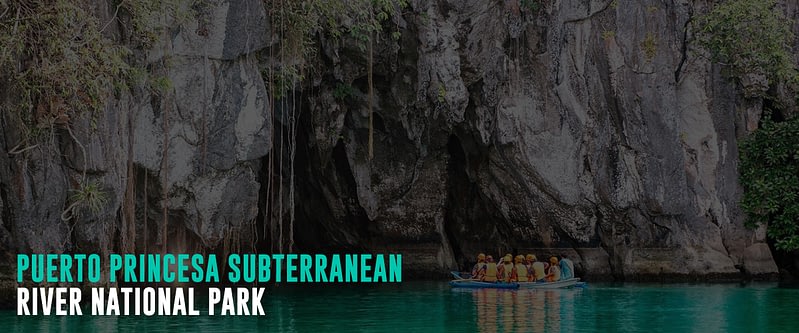
Puerto Princesa is a nature lover’s paradise located on the northern coast of the island of Palawan. It is home to unspoiled forests, beaches, and an underground river called the Puerto Princesa Subterranean River National Park. This natural wonder is the world’s longest navigable river cave (8.2 km). Visitors will see stalactites and stalagmites of various sizes, intriguing rock formations, and fluttering bats inside the cave. Around the park is a limestone karst mountain and the white sand Sabang Beach. To visit the Puerto Princesa Subterranean River National Park, visitors need to secure an entry permit before proceeding to the park. The PPSR became a UNESCO World Heritage Site in 1999 and was voted the New 7 Wonders of Nature in 2012.
Coron Island
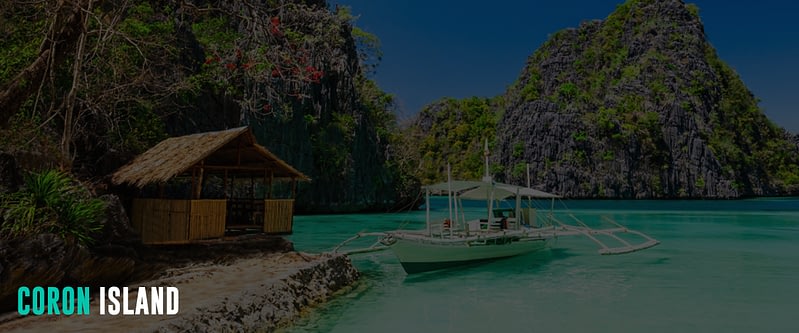
Coron is one of the most amazing islands in the northern part of Palawan in the Philippines. Surrounding the island are white sand beaches, massive limestones peak, beautiful lagoons, and excellent snorkeling waters. Also, it has one of the best dive sites in the country, having rich coral reefs and shipwrecks from World War II. On the island, it is a must to go island hopping, visiting Twin Lagoon, Kayangan Lake, and Baraccuda Lake.
El Nido
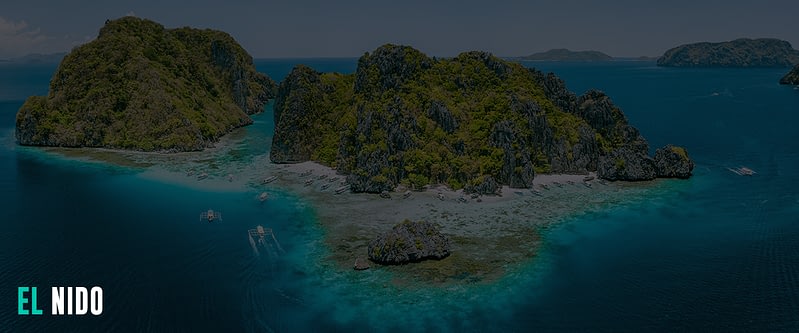
Located in the northeastern part of Palawan, El Nido is highly recommended by local and international travelers as the top choice to go to in the Philippines. Many travel publication sites named El Nido the best island beach in the world because of its paradise-like attractions with white sand, turquoise waters, vibrant coral reefs, and stunning limestone cliffs. El Nido is the gateway to Bacuit Archipelago, which houses 45 islands and islets, each with unique geological formations, offering picturesque and awe-inspiring destinations.
When in El Nido, visitors must not leave without island hopping to Big and Small Lagoon, Hidden Beach, and Snake Island. Tourists can also relax on its white sand beaches, hiking up limestone cliffs, and even scuba diving.
San Vicente
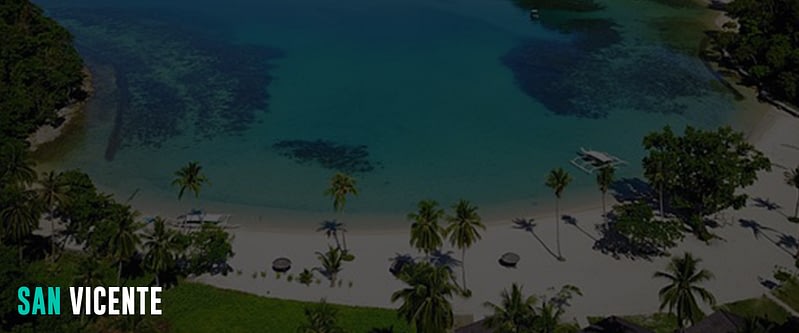
San Vicente is an emerging tourist destination in Palawan. It is where you can find Long Beach, the longest beach in the Philippines, and the famous beach town of Port Barton. Long Beach is a 14 km of almost empty golden-hued, sunset-facing beach. What’s best about this coastal town is its precious silence, bringing you a relaxing vibe. Unlike its famous neighbor, El Nido, San Vicente is not commercialized.
Boracay Island
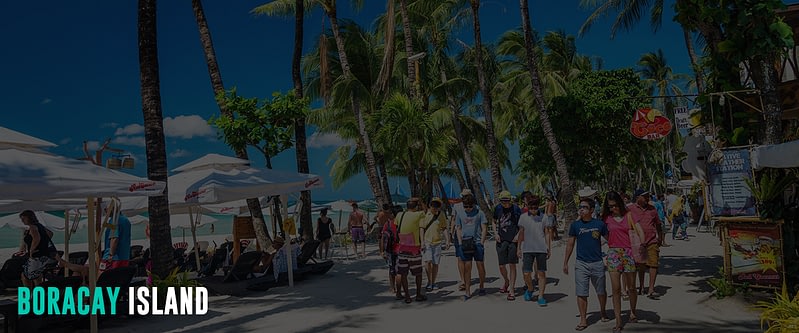
Boracay is one of the best beaches in the world. It is famous for its fine, white, and smooth sand beaches. The island may be small but has various water activities and adventures. Island hopping, snorkeling, parasailing, scuba, and cliff diving, are only some things you can do on the island. It has a stunning sunset view, and its nightlife pulsates with many bars and restaurants serving food, drinks, and fun until dawn.
Tubbataha Reef Marine Park
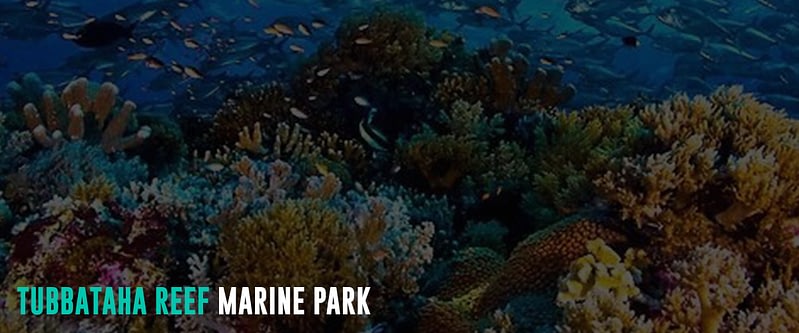
The Tubbataha Reef is part of the Sulu Sea and is located southeast of Puerto Princesa City, Palawan. It is a marine sanctuary protected as the Tubbataha Reef National Marine Park, a UNESCO World Heritage Site in 1993. The reef comprises two huge atolls, North and South, separated by a deep channel approximately 5 miles (8 km) wide. It has become one of the most popular dive sites in the Philippines because of its coral walls and very high density of marine species. The marine park is open to live-aboard diving excursions from April to June.
Siargao

Siargao is a teardrop-shaped island located in the northeastern part of Mindanao and the surfing capital of the Philippines. Siargao is one of the most sought-after destinations after being featured as the world’s most beautiful island in 2018 by Conde Nast Traveler. Visitors will likely fall for the pristine white sand beaches and islets, coconut woodlands and lagoons, mangrove forests, and crystal clear waters you will ever see. Also, the island is a haven for surfers with its perfect waves from July to November. Island-hopping is also a popular activity in Siargao, and the triple island tour to Guyam Island, Daku Island, and Naked Island is worth blocking off your entire day. Another must-visit destination in Siargao is the Sohoton Cove and Magpupungko Rock Pools.
Puerto Galera

Puerto Galera is in the eastern part of Mindoro and a quick destination from Manila. This coastal town has gorgeous beaches, excellent diving spots, and diverse marine species. The most popular beaches are White Beach, Sabang Beach, and the natural harbor of Muelle Bay. These attractions have nearby shopping, dining, nightlife, and hotel accommodation. Visitors can snorkel to see some of Asia’s best coral reefs or dive among old shipwrecks and hundreds of fish species. Also, because lush mountains overlook the island, visitors can explore the hills and forests and maybe do some camping: the best of both worlds.
Donsol

Donsol is located in the province of Sorsogon. It is the place to see, dive, and swim with the gentle giant whale sharks, locally known as “butanding.” These gentle giants are visible between November and June, with numbers peaking between February and May. Visitors can also take a boat cruise along the Donsol River, passing through the mangroves and palm trees, and watch the night light up with millions of sparkling fireflies. Not only that, but Dolsol also has white beaches, stunning waterfalls, and unexplored caves.
Manila
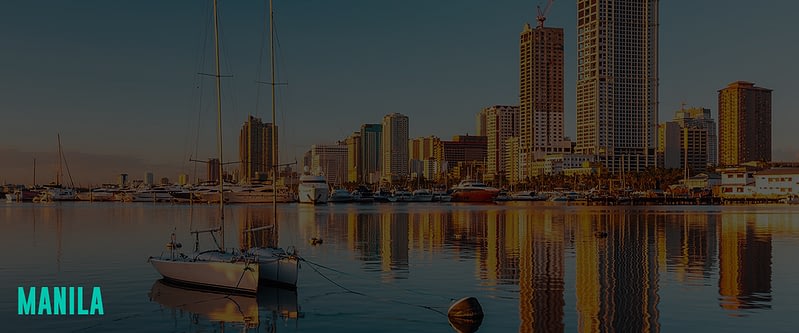
Manila is the capital city of the Philippines and the primary gateway of most international flight arrivals to the country. In addition, it is home to many historical sites built in the sixteenth century.
Corregidor Island
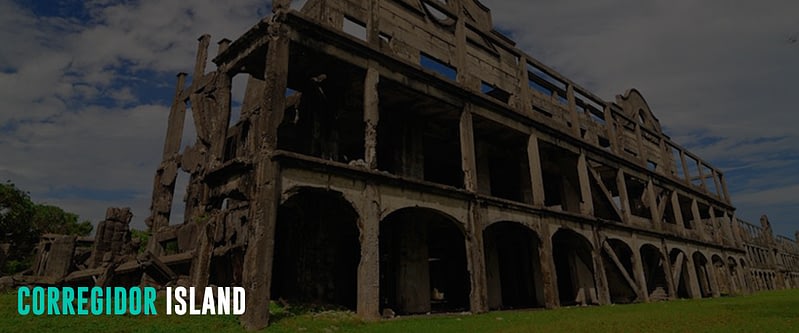
Corregidor Island is nestled in the southwestern part of Luzon and at the entrance of Manila Bay. The island is one of the country’s most important historical and tourist sites. Corregidor was the last island in the Philippines to be captured by the Japanese during World War II. During the war, the island was heavily bombarded. Remnants and relics of those battles are still visible, including the tunnels where Filipinos and Americans hid and the cannons they used to fight the Japanese ships and aircraft. Hence, it is a historical and sentimental place for Filipinos, Japanese, and the US, which helped its liberation. Visiting this island will make you reminisce about the history and imagine the pain and difficulty of life during World War II.
Intramuros
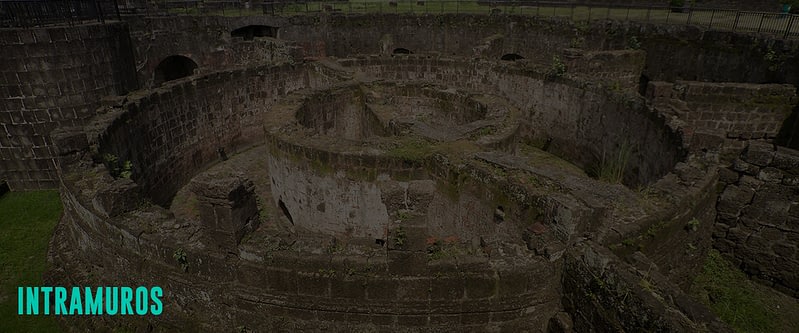
Intramuros is a walled area in Manila that used to be the seat of religious and political power during the Spanish colonial period. Located south of the Pasig River and east of Manila Bay, Intramuros houses historic buildings, churches, plazas, and museums that offer the best history lessons about the Spanish colonial era in the Philippines. Besides being the religious and political center, Intramuros also served as the educational center of the Philippines. Mainly, it houses San Agustin Church and various schools and universities, including the University of Sto. Tomas, the oldest university in Asia, before transferring to its new location. The wars destroyed the walled city of Intramuros, flattening almost every structure except for the San Agustin Church.
Intramuros is a top tourist spot in Manila. Visitors can explore it daily, including Fort Santiago and San Agustin Church.
Fort Santiago
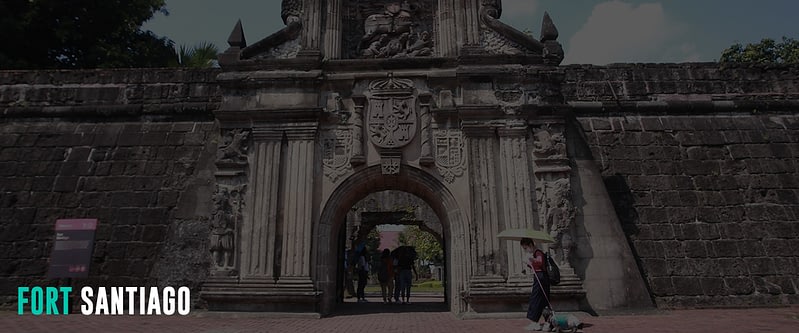
Fort Santiago is one of the most historical sites in Metro Manila. It is a defense fortress built in 1571 in Intramuros, the walled city of Manila. Hundreds, if not thousands, died there during the Spanish colonial time and World War II.
Today, Fort Santiago is part of a historical park with Plaza Moriones and several ruins. The park houses well-preserved legacies from the Spanish Colonial Period, including Philippine National Hero Jose Rizal memorabilia.
San Agustin Church
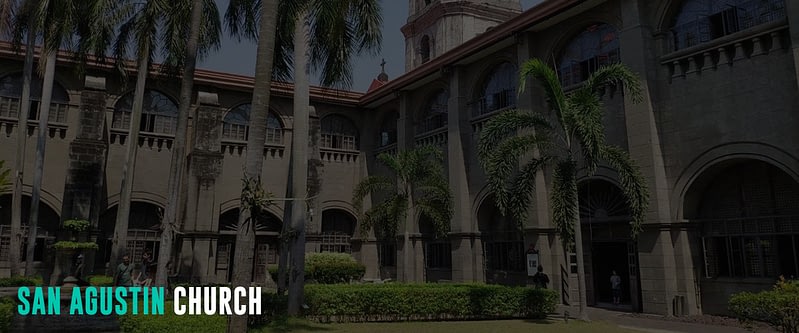
San Agustin Church in Manila was built in 1589 and completed in 1607; it is the oldest stone church in the country. It is one of the Baroque Churches of the Philippines and is a UNESCO World Heritage Site. This beautiful church has survived seven earthquakes and two fires over the centuries. The main entrance has exquisite carvings on the wooden doors, the interior has a Mexican-influenced design shaped like a Latin cross, and the ceiling was painted in the 1800s by Italian artists Giovanni Dibella and Cesare Alberoni. The church is a must-see when exploring Intramuros and Metro Manila.
Cebu
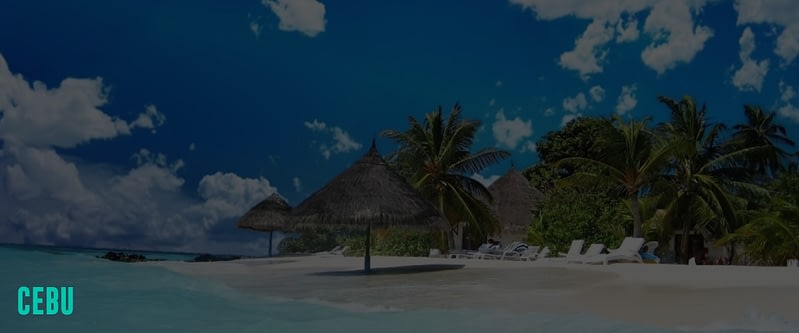
Cebu, also known as the Queen City of the South, is in the Visayas Islands. It is a popular destination in the Philippines and has captured the attention of millions of foreigners worldwide. Cebu City and the whole island boasts various attractions, stunning beaches, the best dive sites, historical sites, and gastronomic experiences. A must-try for visitors is the best Cebu Lechon (roast pig).
Magellan’s Cross
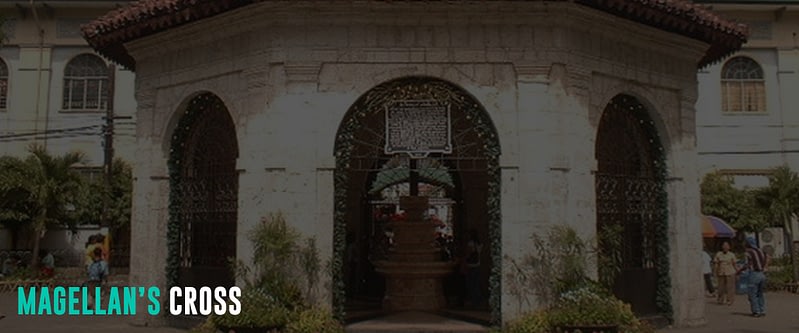
Magellan’s Cross Pavilion is a stone kiosk and one of the cultural landmarks in Cebu City, Philippines. The structure is in Plaza Sugbo, beside the Basilica del Santo Niño. It houses a Christian cross planted by explorers of the Spanish expedition of the first circumnavigation of the world, led by Ferdinand Magellan, upon arriving in Cebu, Philippines, on April 21, 1521.
The pavilion is a declared National Cultural Treasure of the Philippines, along with the Basilica del Santo Niño’s church and convent buildings. In addition, Magellan’s Cross is a religious and pilgrim site that commemorates the foundation of the Christian faith in Cebu.
Basilica del Santo Niño
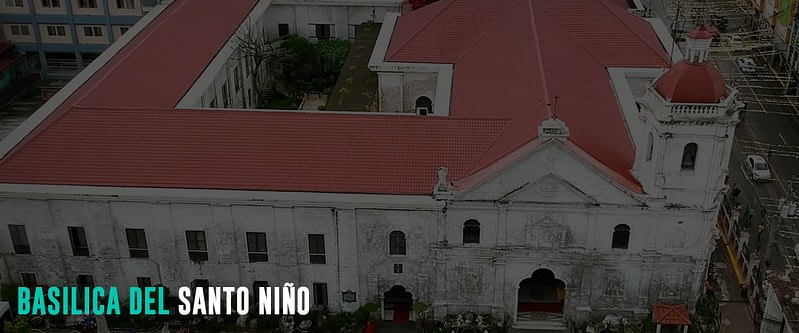
The Basílica Menor del Santo Niño de Cebú, commonly known as Santo Niño Basilica, was founded in 1565 and is the oldest Roman Catholic Church in the country. It houses the original image of Child Jesus presented by Ferdinand Magellan to Rajah Humabon (on their royal Baptism to Roman Catholicism on April 14, 1521). The image is said to be miraculous and is the centerpiece of Cebu’s largest annual event, the Sinulog Festival, every 3rd Sunday of January. The basilica is a symbol of and birth of Christianity in the Philippines and a popular destination for devotees.
Canyoneering in Kawasan Falls
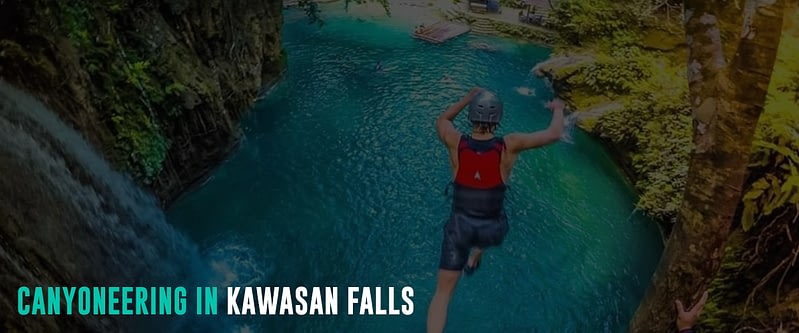
Kawasan Falls, in the southern part of the island province of Cebu, is one of the best waterfalls in the Philippines. It is a three-hour bus ride from Cebu City, but the three-tiered cascade that features distinctly turquoise water won’t disappoint you. Adventurous visitors can try canyoneering, passing through towering gorges and stalactite boulders, swimming and rappeling through the river canyons, and jumping off 30-foot-high cliffs into the blue pools of Kawasan Falls. Lastly, the final leg is the top tier of the Kawasan Falls, known as Kabukalan Spring, from where the water comes.
Whale Shark Watching in Oslob
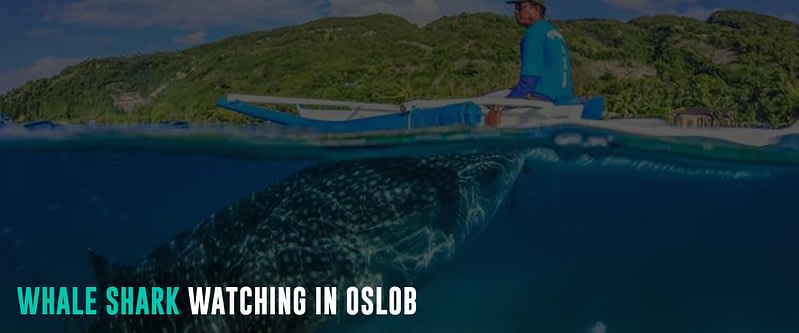
Oslob, in the southern part of Cebu province, is one of the two destinations in the Philippines famous for Whale Shark watching. Although controversial, the town is a tourist magnet, and over a hundred thousand tourists visit yearly to swim with the whale sharks. However, the activity is heavily criticized for feeding the whale sharks and disrupting their natural migration patterns and behaviors.
Bantayan Island
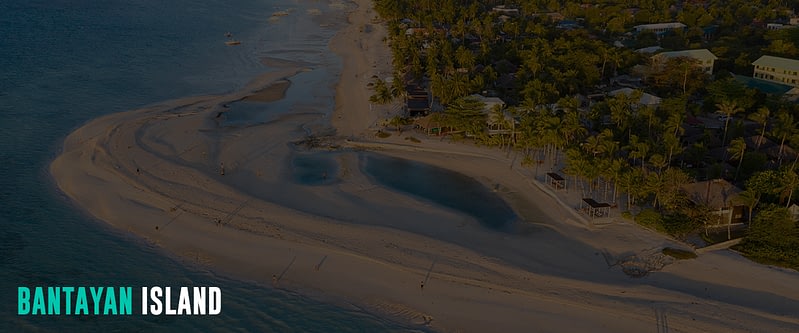
Bantayan is a small island off the coast of northern Cebu, with beaches exuding the same charm and beauty as the famous Boracay Island. The best part is that Bantayan is not as commercialized and crowded as Boracay and offers a relaxing beach vacation and one of the most beautiful sunsets. A must-visit is Kota Beach, which features a sandbar and a lagoon, making it a perfect spot for wading in and sunbathing. On the other hand, Paradise Beach is a serene stretch of white sand beach that features beautiful rock formations. The island also boasts two natural cave pools, the Ogtong Cave and the Sto. Niño Cave, with a natural cold spring, is great for cooling off after a morning of beach-hopping.
Malapascua Island
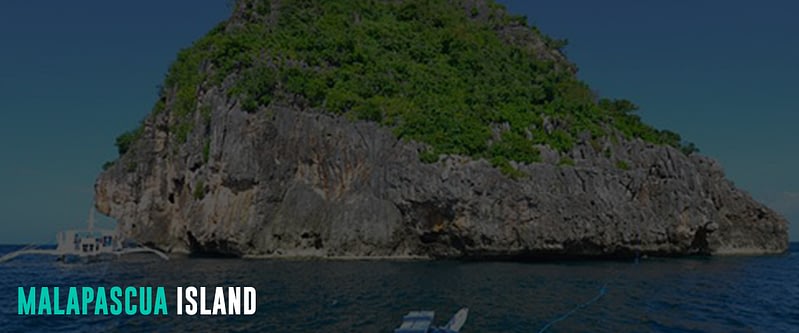
Malapascua Island in the northern part of Cebu is one of the best diving spots in the Philippines. It is the only place in the world where you can dive with thresher sharks nearly daily, including manta rays and hammerheads. The island also boasts other hidden gems, including sandy white beaches, crystal clear waters, and diverse coral gardens. Malapascua Island is less commercially developed, and that relaxing and friendly beach vibe makes the island even more inviting.
Mayon Volcano
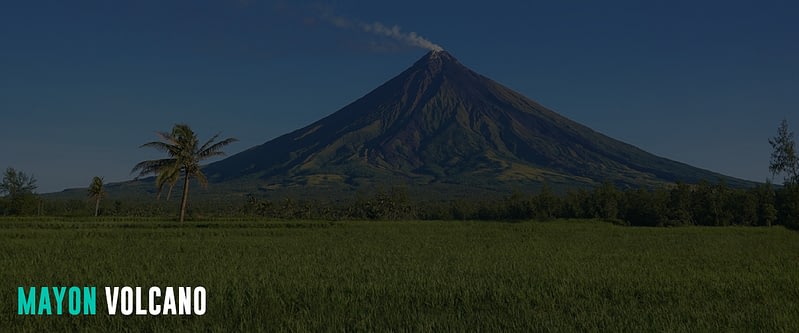
Mount Mayon is an active stratovolcano in the province of Albay. A popular tourist spot, it is famous for its “perfect cone” because of its symmetric conical shape. It is also regarded as very sacred in Philippine mythology. Rising more than 8,000 feet (2,400 meters) above sea level, Mayon is the most active volcano in the Philippines. It has erupted over 49 times in the past 400 years, bombarding the nearby towns with volcanic rocks. The belfry and what is left of the baroque church destroyed by the 1814 eruption are still visible and a favorite subject for photographers. The most picturesque spot is near the Cagsawa Church Ruins. Visitors can enjoy several activities here, such as camping, climbing, hiking, bird watching, and photography.
Chocolate Hills
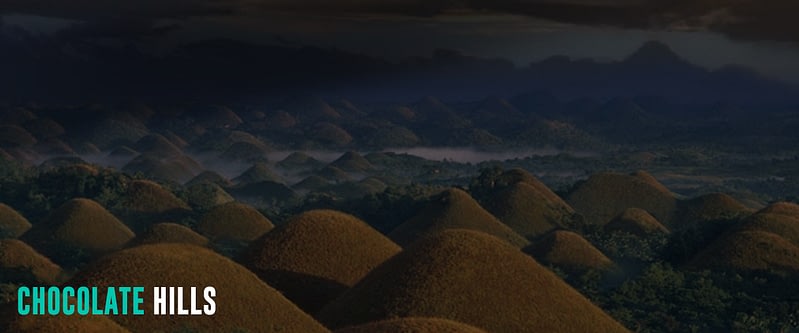
The Chocolate Hills are geological formations that consist of at least 1,260 mounds in the province of Bohol. The formations range from 98 to 164 feet (30-50 meters) high, full of green grass that turns brown during the dry season. Hence, the name. The Chocolate Hills is a remarkable example of conical karst topography – eroded formations of marine limestone that sit on top of hardened clay.
Banaue Rice Terraces
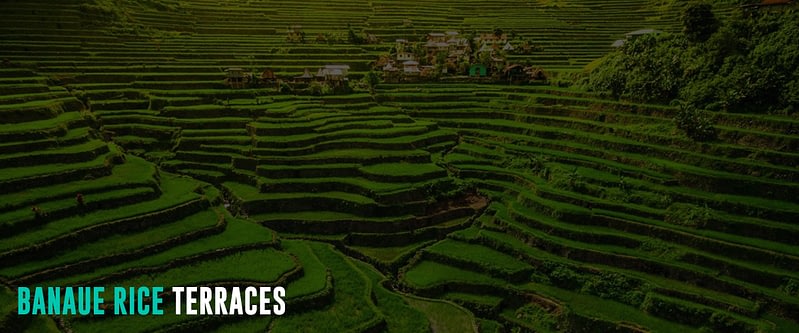
The Banaue Rice Terraces are terraces that were carved, with minimal equipment by hand, into the mountains of Banaue, Ifugao. Created by the ancestors of the Igorot people about 2,000 years ago, the terraces are occasionally called the “Eighth Wonder of the World,” These magnificent farm terraces resemble giant steps reaching the sky and where locals plant rice and vegetables.
Primary Spoken Language(s)
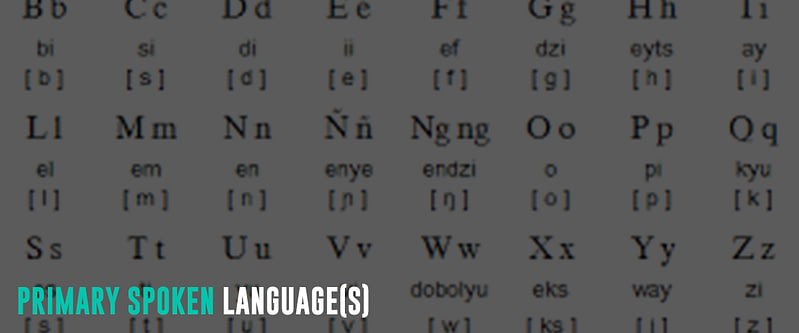
Filipino and English are the official languages of the Philippines. The national language is Filipino and is based on Tagalog combined with other regional languages. English is a widely used school instruction medium, along with Filipino. In addition, the Philippines has eight other significant languages: Tagalog, Cebuano, Ilocano, Hiligaynon or Ilonggo, Bicol, Waray, Kapampangan, and Pangasinense.
Safety Concerns
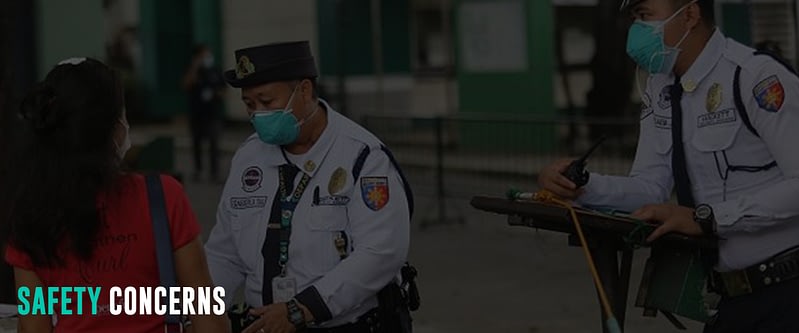
Over the years, the southern part of the Philippines has had a history of crime, terrorism, and kidnapping, as the US travel advisory indicated. But because of the government response, terrorism and kidnapping in the country have been neutralized over the past six years. As a result, peace and order have improved, and contrary to popular belief, the Philippines is safer than the media and other foreign authorities make you believe. The Philippines ranks 125 out of 163 countries in the 2022 Global Peace Index, safer than the US at 129.
Still, everyone should be constantly vigilant. When visiting big cities and crowded places, be aware of pickpockets. Also, keeping your belongings close to you and always having your bags in sight is a must. Do not give money to beggars, either old or children. Give them food instead, or ignore them. The country has anti-mendicancy law and does not tolerate individuals asking for money in the streets.
With its location in the typhoon belt, the Philippines experience 15 to 20 typhoons annually from July to October—an average of 8 or 9 typhoons land in the Philippine area of responsibility. Aside from typhoons, the country is also prone to earthquakes.
Above all, it is best to follow the advice of authorities at all times and be observant of your surrounding.
Central 911
In any event of an emergency, anyone can dial 911. In addition, the national emergency hotline will help you connect to the respective office to address your needs.
Davao City on the island of Mindanao pioneers creating and implementing an emergency Central 911 facility. It has state-of-the-art facilities, advanced resource equipment and tools, and highly-trained and competent personnel from units serving various emergency needs and concerns. As a result, Davao City Central 911 takes pride as the first of its kind in Asia and the third in the world after the United States and Canada. Unlike its counterparts in the world, the Central 911 services in Davao City are fully subsidized by the city government. Hence, all the services are free of charge.
The presence of the Central 911 facility in Davao City, along with other leadership policies and implementations, makes it one of the safest cities in the world.
Budget Considerations
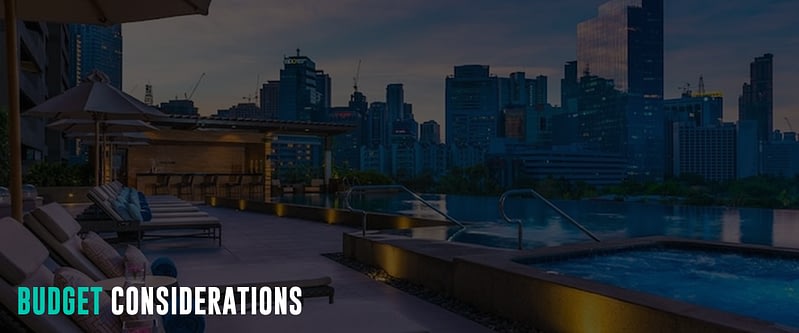
Traveling to the Philippines is value for your money. Relative to location, the country generally has a low cost of living. For as low as $15-20, a visitor can have a private room in a budget hotel. On the other hand, an average 3-star hotel costs around $50-$60 per night.
For as low as $2, you can have a decent meal in known fast food chains or a diner/cafeteria called “carenderia.” A packed lunch or dinner in a local restaurant costs around $3-6. You can even have a buffet meal at $10! The transportation cost is not that bad, despite the global hike in fuel prices. The minimum jeepney fare is $0.22 (PHP13), while the taxi flag-down rate is $0.70 (PHP40). With competition in local airlines, airfares are getting cheaper. As a result, a traveler can get a one-way flight ticket from Manila to the Visayas for $35. Meanwhile, a flight from Manila to Mindanao will cost around $45. Tourist attractions like beaches are mostly free in the Philippines, except for the minimal cost of paying the environmental tax or availing of diving and island hopping services.
Considering the cost of accommodations, food, transportation, and domestic airline tickets, a budget traveler’s $800 in the Philippines can go a long way for a two-week stay. But note that the figure does not include flight ticket costs from your home country and back. Hence, it is one of the reasons why the Philippines is famous as a haven for foreign tourists and retirees.
Customs And Import Restrictions

There are no particular travel customs or import restrictions for arriving passengers in the Philippines. However, visitors should be aware of the below strict prohibitions to avoid hassles during their trip.
- Written or printed goods in any form containing any matter advocating or inciting treason, rebellion, insurrection, or sedition against the government of the Philippines, or written or published goods containing a threat to take the life of or inflict bodily harm upon any person in the Philippines;
- Printed material, goods, instruments, drugs, and substances designed, intended, or adapted for producing unlawful abortion.
- Pornographic materials, including written or printed goods, negatives or cinematographic films, photographs, engravings, lithographs, objects, paintings, drawings
- Any goods manufactured in whole or in part in gold, silver, or other precious metals or alloys and the stamp, brand, or mark does not indicate the actual fineness or quality of the metals or alloys;
- Any adulterated or misbranded food or goods for human consumption or any adulterated or misbranded drug in violation of relevant laws and regulations;
- Infringing goods as defined under the Intellectual Property Code and related laws; and
- All other goods or parts thereof, which importation and exportation, are prohibited by law or rules and regulations issued by the competent authority.
For a convenient customs clearance process, each arriving passenger in Ninoy Aquino Internation Airport Terminal 1 must log in at Philippines Customs Idle Care and fill out the necessary information in the e-CBD form within 48 hours before arrival. After completing the process, download the generated QR code and present it to the customs officer upon arrival for clearance.
Visitors can also check the Philippines Bureau of Customs web page for the complete customs and import restrictions lists.
Climate Considerations
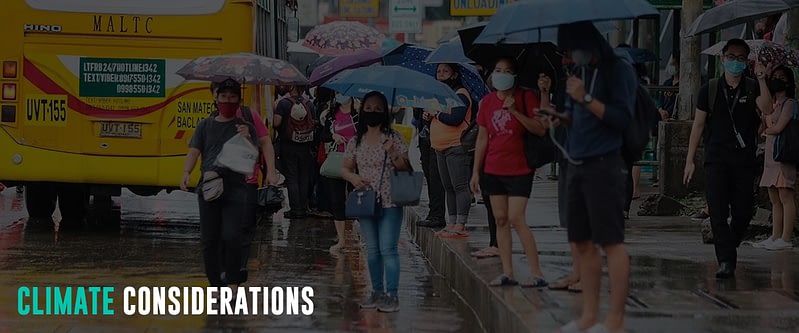
The climate in the Philippines is tropical and maritime, with high temperatures, high humidity, and abundant rainfall. The country has two major seasons: the rainy season from June to November and the dry season from December to May. The dry season can be further subdivided into the cool, dry season from December to February and the hot, dry season from March to May.
The annual average temperature usually ranges from 21 °C (70 °F) to 32 °C (90 °F) except in Baguio City, which has an average of 18.3 °C. Baguio City, the summer capital of the Philippines, has an elevation of 1500 m above sea level. Therefore, the coolest month is January, while the warmest is May.
For the latest weather information, visit the Philippine Atmospheric, Geophysical, and Astronomical Services Administration (PAGASA) web page.
Primary Transportation Options
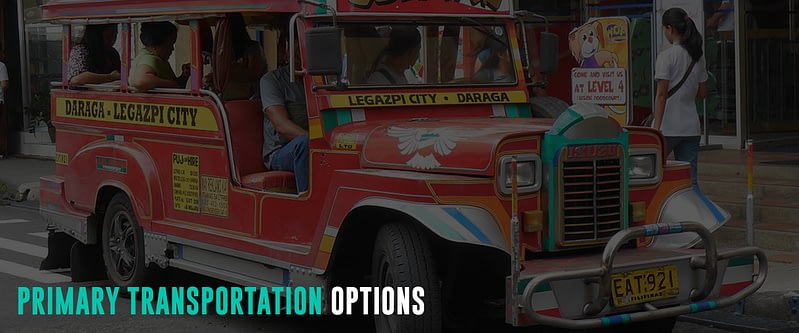
Visitors can explore the Philippines by road transport, air, and water. Depending on your time and resources, visitors can choose which options they would like to navigate the country.
Air
The Philippines has around 70 airports catering to nationwide international and domestic flight services. The Ninoy Aquino International Airport in Manila is the main entry point for international passenger arrivals. Mactan-Cebu International Airport in Cebu and Francisco Bangoy International Airport in Davao follow.
Public Transport
Public transport in the Philippines include buses, jeepneys, UV Express, TNVS, Filcab, taxis, and tricycles. Jeepneys are the most popular means of public transportation and an iconic public utility vehicle. On the other hand, buses cater to long-distance travel, transporting passengers from the metro to the provinces on regular routes and schedules. UV Express is a shared “taxi” service using utility vans. But unlike buses, UV Express doesn’t have a regular schedule and leaves only when the car is complete. TNVS, Filcab, and taxis primarily operate in big cities and the metro, while tricycles serve rural areas.
In favor of more efficient and environmentally friendly Euro 4 compliant vehicles, the government is gradually phasing out Jeepneys and other public utility vehicles older than 15 years. This action is one of the government’s plans to save the environment and combat climate change.
Car rental and self-driving are also possible in the country. But beware of the extreme traffic and some ill-educated drivers in Metro Manila.
Water
There are 7,641 islands in the Philippines; some islands are only reachable by water transport. Nonetheless, regular ferry schedules connect the islands to the metro, transporting passengers and road vehicles. Tourists also need to take a boat to visit and explore some of the beautiful island beaches in the country. Boat transfers are necessary when going to Boracay, Bantayan Island, Bohol, and Coron, to name a few.
Rail
Rail transportation in the Philippines is only in Luzon, particularly Metro Manila. At this time, the rail system in the country is undergoing a gradual upgrade. It aims to serve most of the riding public, reduce road congestion, and reduce Metro Manila’s traffic.
Start Trip Planning
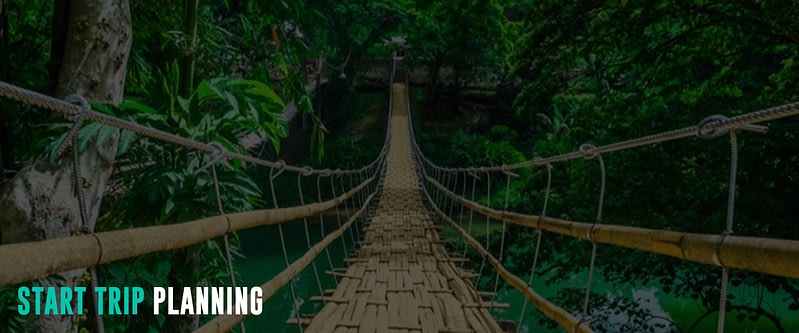
Travel-Wise is made from the ground up to help people travel more, break down the barriers that make it tough to get going, and start your journey as painlessly as possible. Bookmark our other Country Guides to help kick-start your research for future travels. We also offer templated itineraries from our staff and community that help serve as a building block for your trip plans. Alternatively, we also utilize AI to offer a way to generate itinerary ideas. This saves much time just getting you up and running with a template. From there, you can use the trip planner to create your customized itinerary, invite friends and family for collaboration, find others from Travel-Wise to join the trip, book and track important information, journal, and share your experiences at the end or along the way!

